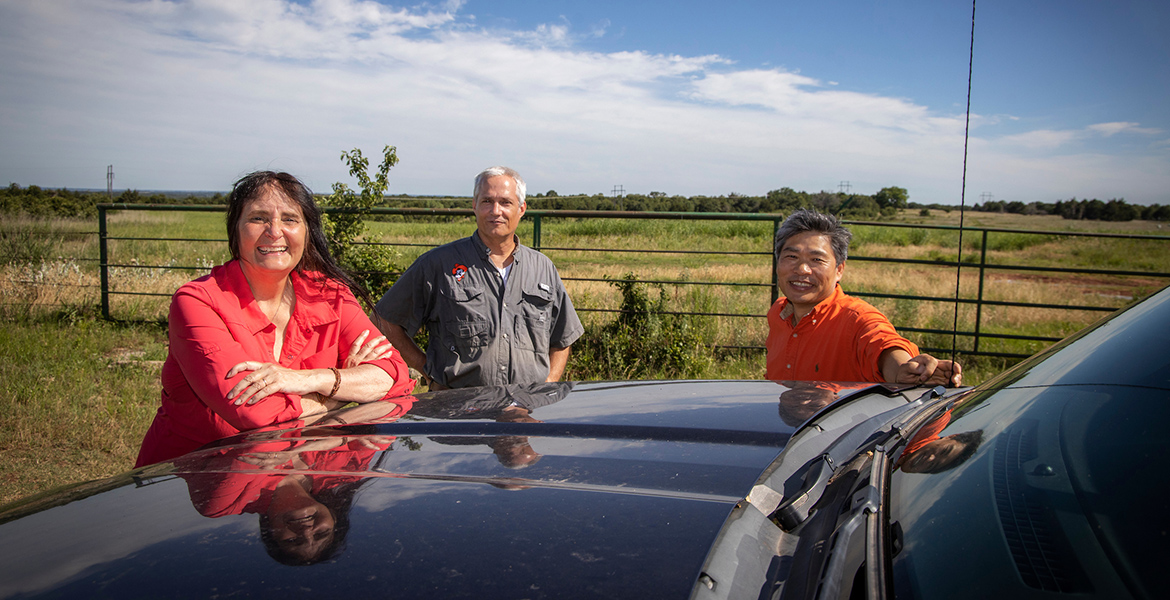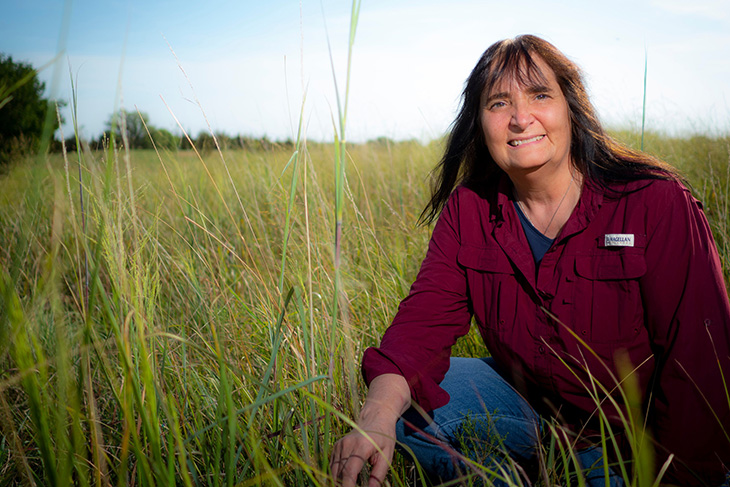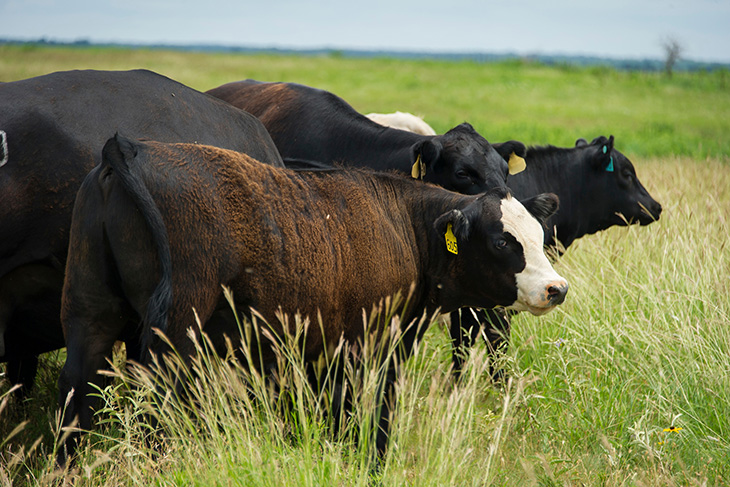
Oklahoma State researcher explores fungi’s importance in promoting land stewardship
Monday, January 25, 2021
Wildfires that devastated swaths of the United States in recent years increased public conversations about climate and carbon sequestration, but those topics have been on the front burner of Oklahoma State University’s Division of Agricultural Sciences and Natural Resources for a long time.
“Since the Industrial Revolution, humans have been converting carbon from the geologic pool into the atmosphere at an astounding rate,” said Gail Wilson, holder of the Sarkeys Distinguished Professorship of Rangeland Soil Ecology with the OSU Department of Natural Resource Ecology and Management. “The carbon existed before it was converted from a solid or liquid state into a gaseous state, of course, but its release as greenhouse gases is having an effect that for the most part is not beneficial to humans or the world’s ecosystems.”
As a scientist, Wilson is among those in the public and private sectors who are striving to find ways to ease the negative consequences. Specific to her research, thinking small is laying the groundwork for possible applications that landowners, agricultural producers and other natural resource managers can do to potentially have a significant positive effect.

“Soil aggregation and carbon sequestration are tightly correlated with the abundance of arbuscular mycorrhizal fungi, the focus of my research for more than a decade,” she said. “These fungi form symbiotic associations with the roots of more than 80% of land plants. Science is showing they are essential to both healthy plant and soil development and play a major role in taking carbon out of the atmosphere.”
Talk climate and most people have heard about carbon sequestration. Fewer people are aware of the importance of soil aggregation, which is an ecosystem variable that influences virtually all nutrient cycling processes and biological life in soils.
“Most people are not aware the biodiversity in one handful of soil is equivalent to the biological diversity in a rainforest,” Wilson said. “The biodiversity in soil declines, sometimes drastically, as soil degrades. The bottom line is we need to repair the soil if we are to promote the plants that grow in the soil. It’s all interconnected.”
That is where Wilson’s research into arbuscular mycorrhizal fungi comes in, improving scientific understanding of interrelationships that literally may help lessen the greenhouse gas problem from the ground up. Wilson and her cooperating scientific investigators have been particularly interested in the role played by grasslands, such as those present throughout America’s central Great Plains region.
Approximately a third of the world’s land surface is grasslands. Wilson said that means those who manage grasslands as part of the world’s food production system are key players in the fight to lessen the negative effects of climate variability. As an example, grazing animals have evolved in a symbiotic relationship with grasslands.
“Beef cattle grazing on grass pastures might not be the first thing many people think of when discussing the subject of combatting greenhouse gas emissions, but it is an agricultural practice that scientific studies have shown can provide significant dividends, especially when considering the world cannot allow land to go to waste if it is to feed a projected population of 10 billion people by 2050,” Wilson said.
Research by R.F. Follett and D.A. Reed published in 2010 examined the effects of grazing on soil organic carbon storage in North American rangelands. Follett and Reed found impacts ranging from no change to up to 268 pounds of carbon stored per acre per year.

“The number of cattle grazed per acre, fertilization and prior land use all can affect how much carbon is stored,” said Brian Freking, OSU Extension area livestock specialist and agricultural educator for LeFlore and Haskell counties. “While changes in carbon sequestration due to grazing or other management decisions may be relatively minor on a per acre basis, they can translate into significant impacts if implemented on a large scale given the number of acres of grassland in the world.”
What about methane emissions from cattle? The U.S. Environmental Protection Agency estimates direct emissions from America’s beef industry account for only about 2% of the nation’s total greenhouse emissions. Throw in the fact that Oklahoma’s beef industry adds more than $3.7 billion annually to the state economy and cattle producers who employ research-proven best management practices are having a significant positive effect on many fronts.
A University of Wyoming study published in 2019 indicated the ecosystem services of cattle ranching and farming conservatively provide $14.8 billion of societal value in the United States. Research by R. Lal published in 2011 indicated if soil organic carbon in agricultural ecosystems and grasslands could be increased by 10% globally during the 21st century, the atmospheric concentration of carbon dioxide could be reduced by 100 parts per million.
In addition, pasture and grasslands account for approximately 27% of the land area in the United States. Avoiding the conversion of this land to tilled cropland and residential uses could help prevent further increases in greenhouse gas emissions.
Wilson loves to point out that grasslands – and the animals that graze them – fill a necessary niche on planet Earth. Unfortunately, when it comes to grasslands, soil conditions have become somewhat degraded. Therefore, to maximize the carbon sequestration potential of grasslands, it is vital good soil conditions be promoted.
“That brings us back to arbuscular mycorrhizal fungi and the important role they play in healthy grasslands,” Wilson said. “We have been losing topsoil a hundred times faster than it is formed. That is not sustainable. But the solution may lie in the fungi. That is why our scientific research is necessary, and why it should be important to everyone.”
OSU Ag Research accounts for about a third of all research conducted at Oklahoma State and about 85% of research royalties that flow back into the university.
MEDIA CONTACT: Donald Stotts | Agricultural Communications Services | 405-744-4079 | donald.stotts@okstate.edu
